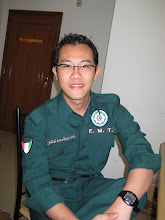Emergency medical services (abbreviated to the initialism "EMS" in some countries) are a branch of Emergency services dedicated to providing out-of-hospital acute medical care and/or transport to definitive care, to patients with illnesses and injuries which the patient, or the First responder, believes constitutes a medical emergency.[1]
Emergency medical services may also be locally known as: First aid squad,[2] Emergency squad,[3] Rescue squad,[4] Ambulance squad,[5] Ambulance service,[6] Ambulance corps[7] or Life squad.[8]
The goal of most emergency medical services is to either provide treatment to those in need of urgent medical care, with the goal of satisfactorily treating the malady, or arranging for timely removal of the patient to the next point of definitive care. This is most likely an emergency department at a hospital or another place where physicians are available. The term Emergency Medical Service evolved to reflect a change from a simple transportation system (ambulance service) to a system in which actual medical care occurred in addition to transportation. In some developing regions, the is not used, or may be used inaccurately, since the service in question does not provide treatment to the patients, but only the provision of transport to the point of care.[9]
In most places in the world, the EMS is summoned by members of the public (or other emergency services, businesses or authority) via an emergency telephone number which puts them in contact with a control facility, which will then dispatch a suitable resource to deal with the situation.[10]
In some parts of the world, the term EMS also encompasses services developed to move patients from one medical facility to an alternative one; inferring transfer a higher level of care. In such services, the EMS is not summoned by members of the public but by clinical professionals (eg. physicians or nurses) in the referring facility. Specialized hospitals that provide higher levels of care may include services such as neonatal intensive care (NICU),[11], pediatric intensive care (PICU), state regional burn centers,[12] specialized care for spinal injury and/or neurosurgery,[13] regional stroke centers,[14] specialized cardiac care[15][16] (cardiac catherization[17]), and specialized/regional trauma care.[18]
In some jurisdictions, EMS units may handle technical rescue operations such as extrication, water rescue, and search and rescue.[19] Training and qualification levels for members and employees of emergency medical services vary widely throughout the world. In some systems, members may be present who are qualified only to drive the ambulance, with no medical training.[9] In contrast, most systems have personnel that retain, at a minimum, a basic first aid certificate (Basic Life Support (BLS)), additionally many EMS systems are staffed with Advanced Life Support (ALS) personnel, including fully qualified paramedics, nurses, or, less commonly, physicians.[20]
The purposes of EMS:
Emergency medical services exists to fulfill the basic principles of first aid, which are to Preserve Life, Prevent Further Injury, and Promote Recovery.
This common theme in medicine is demonstrated by the star of life. The Star of Life shown here, where each of the 'arms' to the star represent one of the 6 points. These 6 points are used to represent the six stages of high quality pre-hospital care, which are:[31]
- Early Detection[31] - Members of the public, or another agency, find the incident and understand the problem
- Early Reporting[31] - The first persons on scene make a call to the emergency medical services and provide details to enable a response to be mounted
- Early Response[31] - The first professional (EMS) rescuers arrive on scene as quickly as possible, enabling care to begin
- Good On Scene Care[31] - The emergency medical service provides appropriate and timely interventions to treat the patient at the scene of the incident
- Care in Transit[31] - the emergency medical service load the patient in to suitable transport and continue to provide appropriate medical care throughout the journey
- Transfer to Definitive Care[31] - the patient is handed over to an appropriate care setting, such as the emergency department at a hospital, in to the care of physicians




